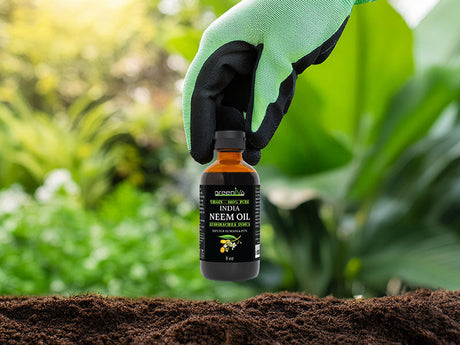You may have heard of cannabinoids and their association with cannabis, but did you know that our bodies produce their cannabinoids, too? The endocannabinoid system (ECS) plays a crucial role in regulating various physiological processes, and understanding it could have important implications for health and well-being.
Scientists and experts continue to examine the ECS and the effects of cannabis. As far as we know, it helps to regulate a range of functions in the body, including:
- Mood
- Appetite
- Discomfort
- Sleep
- Immune function
The ECS is a real system in the body that is active even without the cannabinoids we give it. Keep reading below to learn more about the ECS and how it works with cannabinoids.
What Is The Role Of The Endocannabinoid System?
The Endocannabinoid System (ECS) is a complex immune cell-signaling system that regulates various physiological processes, such as mood, appetite, discomfort, sleep, and immune function.
It was first discovered in the early 1990s when researchers were trying to understand how THC, the psychoactive component of marijuana, affected the body.
The Endocannabinoid System is named after the compounds in the cannabis plant that led to its discovery. The compounds found in the cannabis plants are called cannabinoids.
However, the Endocannabinoid System is not just involved in the therapeutic effects of marijuana. The ECS is a fundamental system in the human body and all vertebrates. The ECS is involved in many processes critical to health and well-being.
How Does The Endocannabinoid System Work?
The ECS consists of three main components: endocannabinoids, cannabinoid receptors, and enzymes. Endocannabinoid levels are naturally occurring compounds similar in structure to the compounds found in the cannabis plant, such as tetrahydrocannabinol (THC) and cannabidiol (CBD).

The two main endocannabinoids are anandamide and 2-arachidonoylglycerol (2-AG). We will focus mainly on the cannabinoid system and its role, as it plays the most important part.
These cannabinoid receptors are proteins found on the cells' surface and are responsible for receiving signals from endocannabinoids. Our body has two kinds of cannabinoid receptors: CB1 and CB2.
The CB1 receptors are found throughout the body but are focused mainly on the brain. These receptors facilitate movement, discomfort, emotion, mood, thinking, appetite, memories, and stress responses. The CB2 receptors are mostly found in the immune system and affect discomfort and inflammation.
Enzymes are responsible for breaking down endocannabinoids once they have fulfilled their function. The two main enzymes in the ECS are fatty acid amide hydrolase (FAAH), which breaks down anandamide, and monoacylglycerol lipase (MAGL), which breaks down 2-AG.
The Endocannabinoid System functions through a process known as retrograde signaling, which means that when a neuron is activated, it releases endocannabinoids that bind to CB1 receptors, inhibiting the release of neurotransmitters.
What Does The Endocannabinoid System Effect?
This mechanism modulates the central nervous system's activity and maintains homeostasis. To keep the body in homeostasis, research has shown that the ECS plays a part in the following processes:
- appetite and digestion
- metabolism
- discomfort
- inflammation and other immune system responses
- mood
- learning and memory
- motor control
- sleep
- muscle formation
- bone remodeling and growth
- reproductive system function
- stress
- skin and nerve function
These are just some areas of the body where the Endocannabinoid System potentially helps keep the body balanced. More research is needed to know the full extent and reach of the ECS.
To sum this up, the endocannabinoid system plays a part in helping the body to stay in homeostasis or balance. There are two main receptors in the body that, when stimulated, help signal to the body that there is a problem. The body then does what it can to potentially fix the issue.
How Does THC And CBD Work With The Endocannabinoid System?
Now that we know how the Endocannabinoid System works, let's discuss how CBD and THC interact with it. The ECS contains compounds that can activate or inhibit the system when the cannabis plant or its compounds are introduced into the body.
When THC is presented to the body, it attaches itself to the CB1 receptors, adding to the cannabinoids our body naturally produces. THC is bound to these cannabinoid receptors, signaling the brain to release more dopamine. This excess of dopamine combined with the THC aids in the "high" feeling associated with THC.

On the other hand, CBD has been shown to have a more complex mechanism of action, indirectly modulating the activity of the ECS and interacting with other receptors in the body.
CBD is believed to stimulate these cannabinoid (CB1 and CB2) receptors and encourage the body to produce its cannabinoids. These cannabinoids then try to find the problem area within the body and may potentially help fix this problem.
CBD is mainly known to potentially help with improvements in symptoms related to sleep, mood, and discomfort. Since these potential problems are associated with some of the systems that the Endocannabinoid System helps with, CBD may be a good option to try if you are experiencing these symptoms.
Understanding Cannabinoids: Exploring the Benefits
Cannabinoids are compounds found in the cannabis plant, each with its unique properties and potential health benefits. Here's a brief overview of some key cannabinoids:
1. CBD (Cannabidiol): Unlike its counterpart THC, CBD doesn't induce a "high. CBD is widely studied for its ability to assist with discomfort, mood, and sleep support.
2. THC (Tetrahydrocannabinol): Known for its psychoactive effects, THC is responsible for the euphoric feeling associated with cannabis use. Used to alleviate symptoms like discomfort, wooziness, and muscle spasms.
3. CBG (Cannabigerol): Often referred to as the "mother cannabinoid" as it is a precursor to CBD and THC. CBG is under investigation for potential discomfort support and mood improvement properties.
4. CBC (Cannabichromene): Unlike CBD, CBC doesn't produce a high. Studies suggest discomfort support and swelling-reducing properties.
5. CBN (Cannabinol): While not as potent as THC, CBN may have mild psychoactive properties. Explored for its potential as a sleep aid.
Understanding the diverse nature of cannabinoids allows individuals to choose products that align with their specific wellness goals. As the research on cannabinoids and synthetic cannabinoids advances, we gain a deeper understanding of their potential applications in promoting overall well-being.
Side Effects of Cannabinoids
While the Endocannabinoid System is mainly associated with being helpful, there can be some adverse effects when the ECS is used. The ECS has also been linked to the regulation of appetite and metabolism.
CB1 receptors are highly expressed in the hypothalamus, a brain region that regulates food intake and energy expenditure.
Studies have shown that activation of CB1 receptors increases food intake and leads to weight gain, while the blockade of CB1 receptors has the opposite effect.
This is why THC is known to increase appetite, whereas CBD has been known to decrease it. Just like any other system in our body, any sort of overload on this system can cause more problems within our body. Because of this, it is important to know more about the ECS and how the things we introduce into our bodies may affect it.
Choosing Quality CBD Products
When delving into CBD, ensuring the quality of the products you choose is paramount for a safe and effective experience. Here are key factors to consider when selecting CBD products:
Importance of Source and Extraction Method
The origin of the hemp plant and the method used to extract CBD play pivotal roles in the quality of the final product. Opt for CBD derived from organically grown hemp to minimize exposure to pesticides and other harmful chemicals.
Additionally, consider products that use clean and efficient extraction methods like CO2 extraction, which ensures the purity of the CBD without leaving behind residual solvents.

Understanding CBD Concentrations
CBD products come in various concentrations, and understanding these concentrations is crucial for finding the right dosage for your needs. Product labels express concentrations in milligrams (mg) per milliliter (ml).
Beginners often start with lower concentrations and gradually adjust based on their response. It's advisable to consult with a healthcare professional to determine an appropriate dosage tailored to your requirements.
Third-Party Testing and Transparency
When choosing CBD products, look for reputable, transparent manufacturers about their ingredients and processes. A key indicator of quality is the availability of third-party lab testing results. These tests are crucial because they verify the amount of CBD and other cannabinoids in the product, confirming that it matches the label.
These tests also check for harmful contaminants like heavy metals, pesticides, and mold. Brands that readily share these lab reports demonstrate their commitment to quality and build consumer trust in the product's safety and effectiveness.
By carefully considering the source of the CBD, the extraction method used, the concentration of CBD, and the results of third-party testing, you can make informed decisions about the CBD products you use. Prioritizing quality in this way helps ensure a positive experience and maximizes the potential benefits of CBD for your overall well-being.
Sum It Up!
Hopefully, you now have a clearer understanding of the endocannabinoid system and its functions. Sometimes, reading about the systems in our bodies, including the Endocannabinoid System, can get confusing with all the technical terms. Still, hopefully, we explained it well enough for you to understand!
The Endocannabinoid System is vital in helping our bodies stay in homeostasis or balance. If we can understand this system a little better, we may be able to make healthier decisions and help our bodies better.
Why Purchase From GreenIVe
GreenIVe CBD products are carefully crafted by cannabis professionals. Each product is made with natural and organic ingredients mixed with high-quality CBD. We promise you'll love our products within 30 days of trying them or get your money back!
GreenIVe CBD Products










